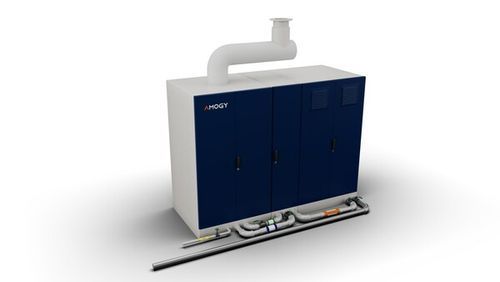The Department of Treasury and the Internal Revenue Service yesterday issued Notice 2024-37 for the new sustainable aviation fuel credit created by the Inflation Reduction Act.
The SAF credit applies to a qualified fuel mixture containing sustainable aviation fuel for certain sales or uses after Dec. 31, 2022, and before Jan. 1, 2025.
To qualify for the credit – $1.25 for each gallon of sustainable aviation fuel in a qualified mixture – the sustainable aviation fuel must have a minimum reduction of 50% in lifecycle greenhouse gas emissions. Additionally, there is a supplemental credit of one cent for each percent that the reduction exceeds 50%, for a maximum increase of 50 cents.
The guidance recognizes the GREET model in accounting for greenhouse gas emissions in SAF. The modified GREET model also integrates GHG reductions from carbon capture and sequestration, renewable natural gas and renewable power used to produce ethanol for qualifying SAF. And it also includes a “safe harbor” pilot program for corn and soy ethanol produced with climate-smart agriculture (CSA) practices.
Even so, most industry trade groups are already focused on the upcoming rulemaking process for 45Z, which will take the place of 40B when it expires later this year.
“We view today’s 40B announcement as the starting point — not the ending point — for additional modeling improvements, further integration of individual climate-smart agriculture practices, and emerging biorefinery technologies,” said Geoff Cooper, CEO of the Renewable Fuels Association (RFA). “45Z is where the rubber really meets the road. We look forward to working with USDA and other agencies across the administration to ensure 45Z is implemented in a way that truly swings the door wide open for farmers and ethanol producers to participate in the enormous decarbonization opportunity.”
Under the guidance, qualifying corn-based ethanol will need to be produced using no-till, cover crop, and enhanced efficiency fertilizer. Meanwhile, soybeans grown using cover crops and no-till will qualify.
Industry trade groups responded in particular to this aspect of the guidance, saying it would be too stringent for farmers to meet all of the CSA practices.
“For growers like me here in North Dakota, short growing seasons and unpredictable fall weather make the cover crop requirement alone next to impossible,” says Josh Gackle, president of the American Soybean Association. “Growers in the Northern Plains do so when possible. However, employing both no till and cover cropping is contrary to what Mother Nature will allow, no matter what the guidance specifies.”
In a press release, the Treasury department noted the agricultural requirements were “a pilot program specific to the 40B credit, which is in effect for 2023 and 2024.”
The reduction from the climate-smart agricultural practices is the only way the resulting ethanol can qualify for the necessary 50% GHG reduction, according to the guidance. For example:
A registered SAF producer produces a SAF synthetic blending component via the ATJ-Ethanol production pathway using 100% CSA corn. Using the 40BSAF-GREET 2024 model, the SAF synthetic blending component produced via the ATJ-Ethanol production pathway has a calculated LSf of 51.8 gCO2e/MJ. This LSf can be reduced by the CSA reduction of 10 gCO2e/MJ. To calculate the emissions reduction percentage (rounding down to the nearest whole percent): [(89 gCO2e/MJ – (51.8 gCO2e/MJ – 10 gCO2e/MJ)) / 89 gCO2e/MJ] x 100% = 53.03%, rounded down to 53%.
Treasury also announced it will develop pathways for ethanol from CSA practices under the 45Z clean fuel production tax credit set to go into effect on Jan. 1, 2025.
Industry reactions:
Renewable Fuels Association
“We are encouraged that, for the first time ever, this carbon scoring framework will recognize and credit certain climate-smart agricultural practices,” says Geoff Cooper, CEO of the Renewable Fuels Association (RFA). “We’re also pleased to see the integration of other carbon reduction strategies—like renewable process energy and carbon capture and sequestration—into the model. However, RFA believes less prescription on ag practices, more flexibility, and additional low-carbon technologies and practices should be added to the modeling framework to better reflect the innovation occurring throughout the supply chain.”
Cooper continues, “We view today’s 40B announcement as the starting point — not the ending point — for additional modeling improvements, further integration of individual climate-smart agriculture practices, and emerging biorefinery technologies. 45Z is where the rubber really meets the road. We look forward to working with USDA and other agencies across the administration to ensure 45Z is implemented in a way that truly swings the door wide open for farmers and ethanol producers to participate in the enormous decarbonization opportunity.”
Gevo
“Today’s guidance reinforces the importance of climate-smart agriculture and other decarbonization methods like carbon capture and storage (CCS) – core tenets of Gevo’s business model for sustainable aviation fuel and other products,” said Dr. Patrick R. Gruber, CEO of Gevo. “Our cutting-edge programs source sustainable feedstocks produced using a variety of climate-smart agricultural practices, and our Verity carbon accounting tool allows farmers to incorporate and track emissions reduction practices tailored to their individual fields. We look forward to sharing key insights from anonymized data to inform the Administration’s upcoming 45Z SAF tax credit guidance – and we will continue to advocate for science-based policies that support CCS and provide new markets for farmers focused on carbon abatement from agricultural activities.”
Growth Energy
“This guidance crosses an important threshold in carbon modeling, recognizing for the first time that farming techniques can reduce the carbon intensity of crops, and, by extension, bioethanol production,” says Emily Skor, CEO of Growth Energy. “It’s also the first time Treasury has used the Argonne National Laboratory’s GREET model in federal tax policy. These are promising big-picture developments and signal that agriculture is a key part of our nation’s climate strategy.
“Still, the administration’s restrictive all-or-nothing approach to recognizing the value of climate-smart agriculture practices may ultimately limit innovation and make farmers, blenders, and producers less – not more – likely to invest in emissions-reducing technologies.”
American Carbon Alliance
“The GREET model is the absolute gold standard when it comes to evaluating the environmental impacts of fuels,” says Tom Buis, CEO of the American Carbon Alliance. “It is an important first step for our industry that for the first time, the U.S. Treasury has used the GREET model in federal tax policy.
“Today’s guidance recognizes the pivotal role that corn ethanol can play as the feedstock for sustainable aviation fuels. This is a good first step. We look forward to improvements that are forthcoming, as Treasury develops guidance for the 45Z provisions, as outlined by Secretary Vilsack.”
American Soybean Association
“For growers like me here in North Dakota, short growing seasons and unpredictable fall weather make the cover crop requirement alone next to impossible,” says Josh Gackle, president of the American Soybean Association. “Growers in the Northern Plains do so when possible. However, employing both no till and cover cropping is contrary to what Mother Nature will allow, no matter what the guidance specifies.”
Clean Fuels Alliance America
“Clean Fuels and its members appreciate the significant work of USDA and other federal agencies to account for the role that U.S. farmers will play in decarbonizing the nation’s aviation fuel,” says Kurt Kovarik, vice president of federal affairs for Clean Fuels Alliance America. “U.S. farmers and SAF producers will continue to work with the agencies to rapidly expand SAF production over the next few years.”
Kovarik adds, “Biodiesel, renewable diesel, and SAF producers are already negotiating feedstock and fuel offtake contracts for 2025, so we look forward to working with Treasury and USDA to quickly turn attention to guidance for the Clean Fuel Production Credit that begins on January 1 next year. We believe there are additional climate-smart agriculture practices and industry data that can be incorporated in the GREET model to support the continued sustainable growth of the entire clean fuel industry.”
American Coalition for Ethanol
“While today’s announcement is a step in the right direction, ethanol-to-jet continues to face headwinds such as artificially inflated land use change penalties in 40B GREET and the initial all-or-none requirement to bundle three CSA [climate-smart agriculture] practices in order to produce qualifying corn ethanol feedstock for SAF,” says Brian Jennings, CEO of the American Coalition for Ethanol.
“With the 2024 planting season underway and the expiration of the 40B credit on December 31, 2024, Treasury’s SAF guidance speaks more to the administration codifying the important role CSA practices play in decarbonizing liquid fuels than the amount of ethanol-to-jet that will qualify for the 40B credit.”







